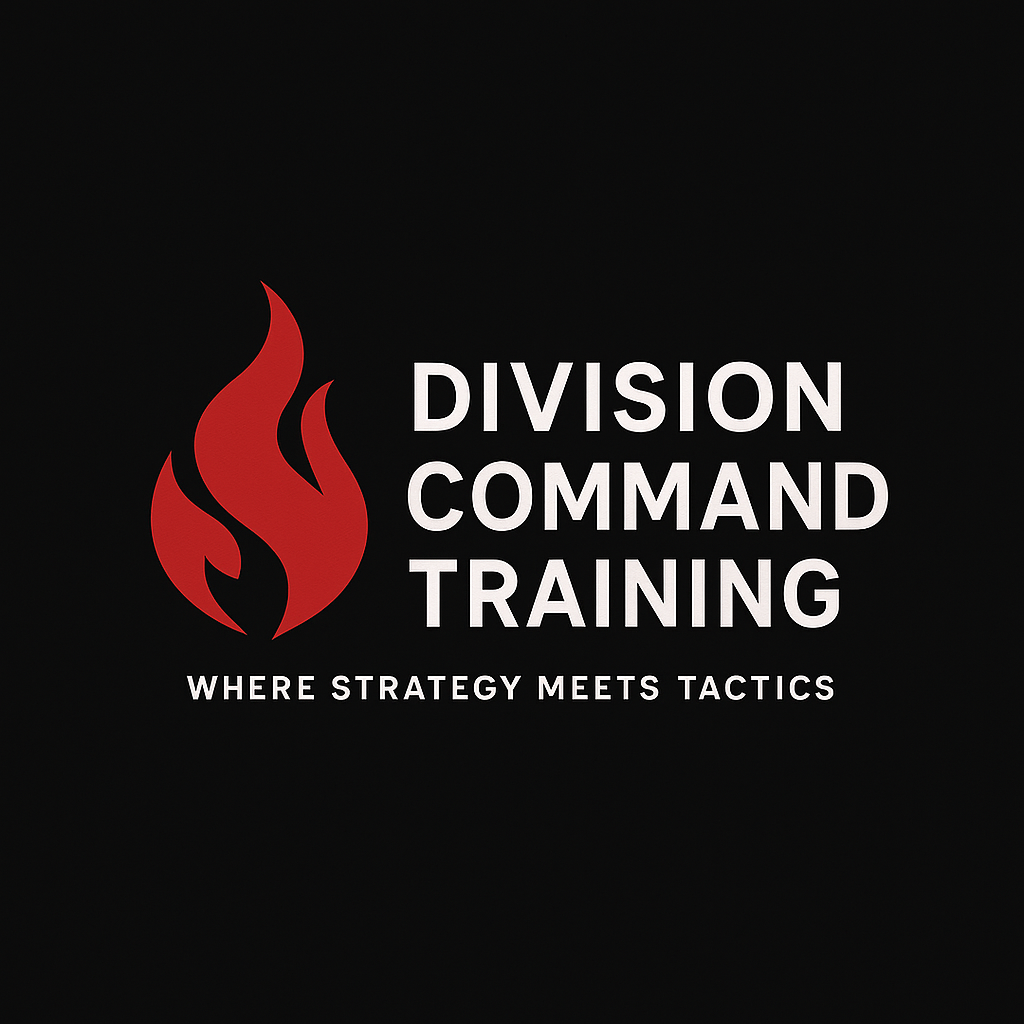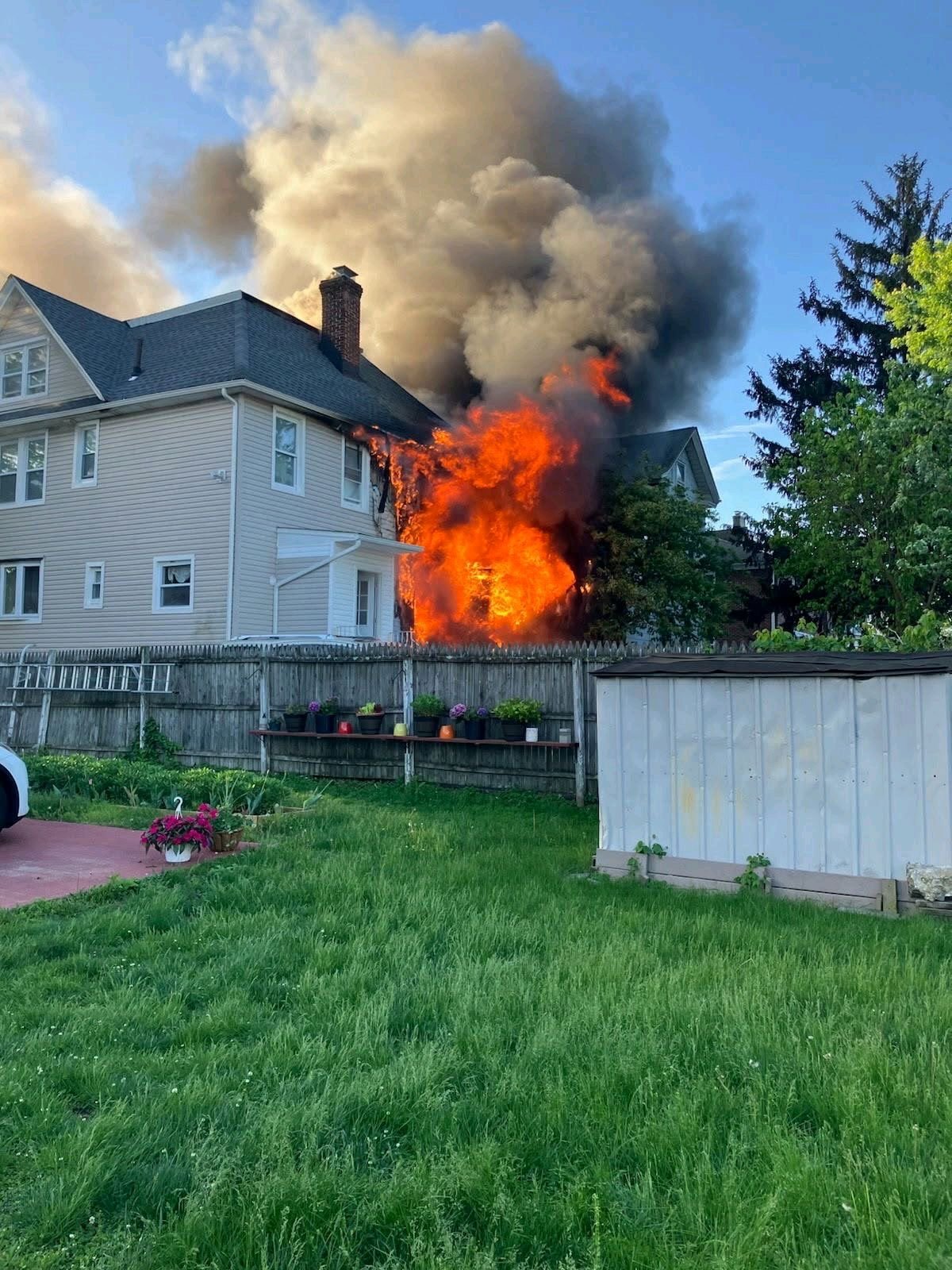

about us
Division Command Training, LLC was founded to meet a critical need in the modern fireground: bridging the operational gap between incident command and task-level execution. Our program, Utilizing Chief Officers as Division Supervisors: Enhancing Task-Level Supervision for Company Officers, is built on real-world experience, tested strategies, and the belief that decisive leadership at the division level saves time, improves safety, and reduces risk.
Developed by Chief Patrick Wirkus, a career Battalion Chief with the Elizabeth, New Jersey Fire Department and a Deputy Fire Mutual Aid Coordinator for Union County, the program draws from command experience in one of the busiest urban fire departments in the state. Chief Wirkus is a designated Chief Fire Officer (CFO) through the Center for Public Safety Excellence and a current National Fire Academy Executive Fire Officer (EFO) candidate. He is also a contributing author for Fire Engineering Magazine and an instructor deeply committed to professional development, safety, and operational excellence.
At Division Command Training, we believe in equipping chief officers and company officers alike with the tools, mindset, and practical skills to operate as effective division supervisors. Our programs are designed to be flexible and grounded in best practices from NIMS, NFPA, and street-level experience.
We don’t just teach theory — we teach what works. Whether you're seeking to improve command presence, reduce the NIOSH 5, or streamline tactical supervision on the fireground, Division Command Training delivers mission-driven instruction that makes an immediate impact.

Courses
-
This course introduces a tactical framework for embedding fire officers into division supervisor roles to address gaps in task-level supervision on the fireground. Participants will explore how this decentralized model reduces span-of-control issues, enhances operational coordination, and improves firefighter safety. Grounded in real-world implementation and aligned with NFPA 1500, 1561, and 1710, the course covers command presence, radio discipline, accountability, tactical coordination, and the use of thermal imaging. Case studies include complex incidents in legacy construction and lithium-ion battery fires. Whether you're a chief officer, aspiring chief officer, or a company officer functioning in a command capacity, this course delivers actionable strategies for improving fireground performance through embedded supervision.
-
This program provides a practical and operationally focused overview of the Incident Command System (ICS) as it applies to initial arriving officers, chief officers, and supporting personnel. Built around the foundations of strategy, tactics, and command presence, the course breaks down the roles and responsibilities of the Incident Commander while reinforcing best practices in size-up, incident priorities, span of control, resource deployment, and progress reporting.
Real-world fireground scenarios, command simulations, and case studies are used to reinforce decision-making, communication, and operational tempo. Whether you are new to the officer role or seeking a refresher to sharpen your command skills, this course delivers the tools and confidence needed to lead from the front and set the tone for incident operations.
-
The Strategy and Tactics for Initial Company Operations (STICO) course, developed by the National Fire Academy (NFA), is designed to prepare first-line supervisors and acting officers to make effective tactical decisions at the company level during fireground operations.
This course focuses on developing the decision-making skills necessary for safe and effective incident management, with an emphasis on initial operations, fire behavior, risk assessment, and strategic thinking in rapidly evolving environments.
Participants will engage in scenario-based exercises and group discussions that simulate common challenges faced during initial fireground operations. Completion of this course enhances readiness for real-world incidents and aligns with national leadership and command competency standards.
-
With the rapid rise of electric vehicle (EV) ownership across the nation, fire and EMS personnel must be equipped with the knowledge and tactics necessary to safely and effectively manage EV-related incidents. This awareness-level course is designed to provide first responders with critical insights into the unique hazards, operational challenges, and response considerations associated with electric vehicles. The course integrates recent case studies, best practices from national research institutions, and aligns with emerging standards and guidance from NFPA, UL FSRI, and NHTSA. Participants will leave with actionable knowledge to support safe decision-making on the fireground and in EMS operations involving electric vehicles.
-
As the popularity of micro mobility devices—such as e-bikes, e-scooters, hoverboards, and other small lithium-ion battery-powered units—continues to surge, so too does the frequency of related fire and EMS emergencies. This course provides essential awareness-level training for first responders tasked with mitigating incidents involving these rapidly evolving hazards. This course incorporates real-world incidents, lessons learned, and guidance from UL FSRI, NFPA, and FDNY/ATF testing initiatives. Participants will gain a foundational understanding of how to recognize, respond to, and mitigate hazards associated with micro mobility devices, enhancing both responder safety and community risk reduction.
-
Division Command Training offers comprehensive CPR certification programs designed to meet the needs of healthcare providers, workplace responders, and the general public. Courses are delivered in alignment with the most current guidelines from the American Heart Association (AHA) and the American Safety & Health Institute (ASHI), ensuring up-to-date, evidence-based instruction.
Available Programs:
AHA Basic Life Support (BLS) for Healthcare Providers
Focused on high-performance CPR, this course is ideal for EMS personnel, firefighters, nurses, and other clinical providers. It includes adult, child, and infant CPR, AED use, and team dynamics in resuscitation efforts.ASHI CPR and AED
Designed for occupational responders, educators, coaches, and community members. This program emphasizes hands-on skills for adult, child, and infant CPR, choking relief, and safe AED operation in a non-healthcare setting.
Whether you're meeting professional requirements or preparing to respond to a cardiac emergency in your community, our certified instructors will deliver engaging, high-quality instruction that builds confidence and readiness.
-
The Right to Know course is a general awareness-level program designed to comply with OSHA’s Hazard Communication Standard (29 CFR 1910.1200), also known as the "Right to Know Law." This course provides essential training for employees who may be exposed to hazardous chemicals in the workplace, ensuring they understand their rights, responsibilities, and how to protect themselves. This program is suitable for all municipal, industrial, and public safety personnel. Participants will leave with a clear understanding of how to identify chemical hazards, respond appropriately, and contribute to a safer work environment.
-
The ASHI Bloodborne Pathogens course is designed to meet the training requirements of OSHA’s Bloodborne Pathogens Standard (29 CFR 1910.1030) and is ideal for individuals with a reasonable risk of occupational exposure to blood or other potentially infectious materials (OPIM).
This awareness-level course equips participants with the knowledge to reduce the risk of exposure, respond appropriately to incidents, and apply universal precautions in the workplace. This course is recommended for firefighters, EMS personnel, law enforcement, custodial workers, and anyone who may come into contact with blood or bodily fluids as part of their duties. Upon successful completion, participants will receive a two-year ASHI certification.

Follow us on social
WEB STORE

Contact Us
Interested in working together? Fill out some info and we will be in touch shortly. We can’t wait to hear from you!

